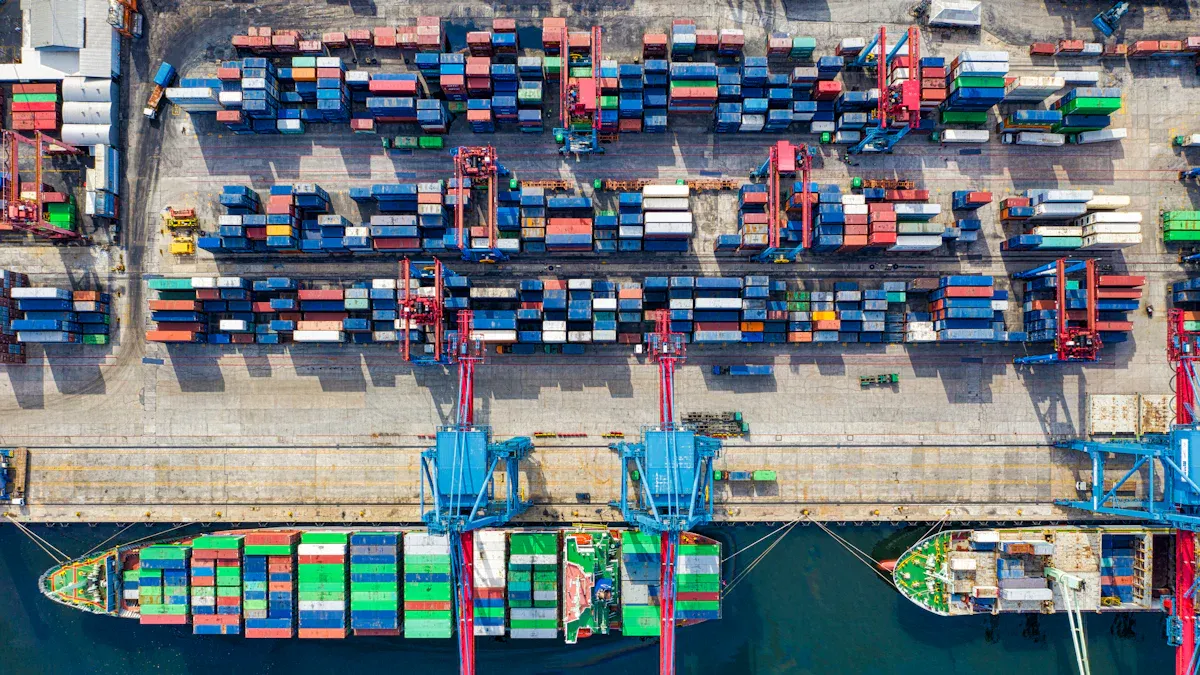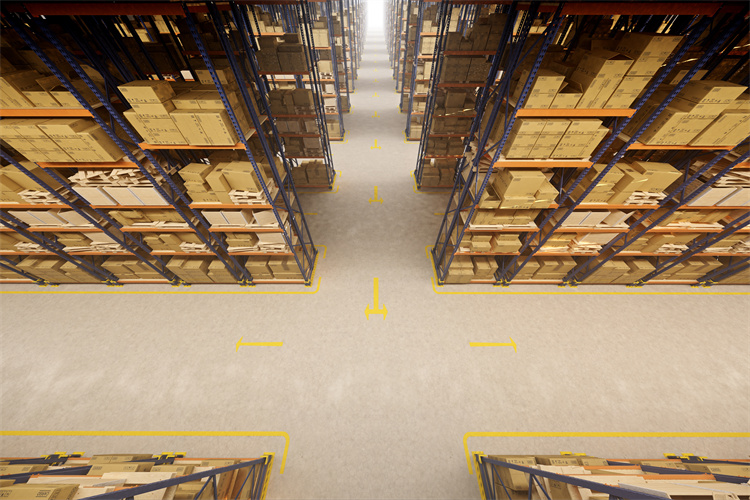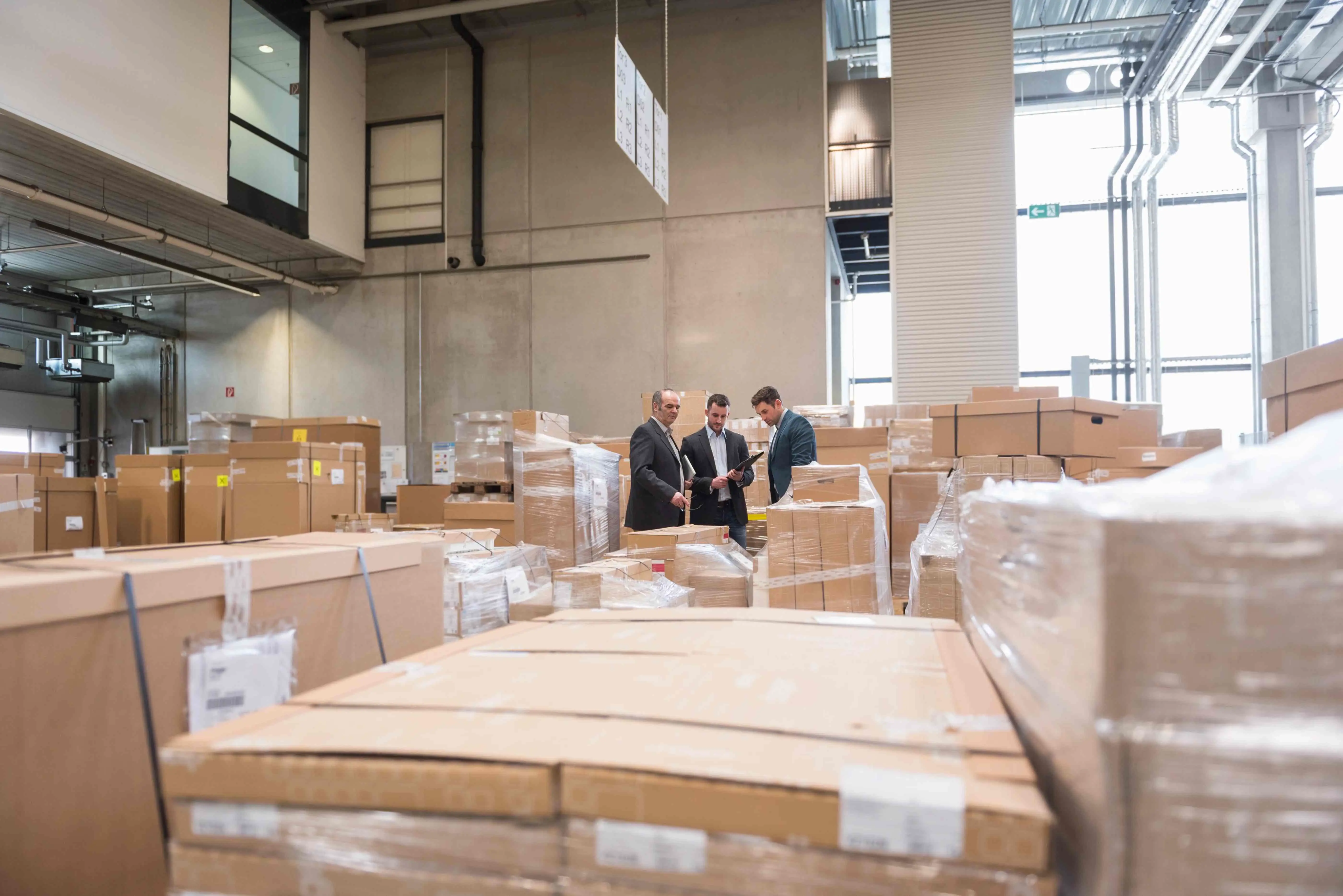Ten Global Trends Transforming the International Logistics Industry in 2025

Digitalization
Green logistics
Supply chain resilience
E-commerce growth
Blockchain
Data analytics
Warehousing innovation
Workforce changes
Geopolitical shifts
Last-mile solutions
Knowing these trends helps the logistics industry change. JUSDA is a leader in new ideas, better work, and staying ahead. People in logistics learn useful things for success around the world.
Key Takeaways
Digital tools and automation make logistics faster. They help lower mistakes. They also make customers happier.
Green logistics uses new fuels and cuts emissions. This helps companies save money. It also helps protect the Earth.
Flexible supply chains help companies handle changes. Training workers with new skills is important. This helps companies stay strong in business.
Digitalization in Logistics Industry

Digital transformation is changing logistics. Companies stop using manual work. They start using digital systems instead. This change makes work faster and more correct. JUSDA leads with its JusLink AI solution. JusLink uses digital ideas to change supply chain management.
AI & Automation
AI and automation are important in logistics now. Automation does simple jobs like sorting packages. It also updates inventory. AI looks at lots of data. It helps guess what people will need. It also finds the best routes. End-to-end automation links every step. It goes from order to delivery. This way, mistakes happen less. Work gets done faster. JUSDA’s JusLink platform uses automation to make logistics easier. It helps people make better choices. Technology lets companies use real-time data. They can react fast when things change.
Real-Time Visibility
Real-time visibility is very important today. Digital tools help track shipments and inventory. They do this at every step. Companies use technology to get and share real-time data. This happens across the whole supply chain. Being open helps managers see problems early. They can make better decisions. JUSDA’s solutions give real-time data. This helps people change plans quickly. It also makes customers happier. Digital systems keep everyone in logistics connected and informed.
Note: Digital transformation and automation help logistics work better, make fewer mistakes, and keep customers happy.
Green Logistics Trends

Decarbonization
Decarbonization is a big trend in 2025. Companies want to lower carbon emissions in their supply chains. Many logistics providers buy energy-saving vehicles. They also plan better delivery routes. Digital tools help track emissions and set green goals. JUSDA uses green ideas and helps clients with eco-friendly choices. These steps help companies follow new rules and look better to others. Decarbonization helps the planet and saves money over time.
Note: Companies that use decarbonization can do better in the world market.
Alternative Fuels
Alternative fuels are important for the future of logistics. Electric trucks, hydrogen vehicles, and biofuels are used more now. These fuels help companies use less diesel and gasoline. Logistics companies try these fuels to cut emissions and be greener. JUSDA looks for new energy sources to help clients go green. Using alternative fuels helps the environment and business goals. It also matches the world’s move to cleaner transport.
Electric vehicles are quiet and need less fixing.
Hydrogen fuel cells let trucks go farther.
Biofuels come from renewable things and make less waste.
Sustainability is the main idea behind these changes. Companies that follow these trends can build better brands. They also meet what customers want from responsible businesses.
Supply Chain Resilience
Diversification
Diversification helps companies keep supply chains strong. Many leaders use different suppliers and routes now. This makes supply chains more flexible. If one supplier has trouble, another can help. Companies also use warehouses in many places. This keeps products moving and supports flexibility. JUSDA uses its global network to help clients find new markets. Spreading out resources lowers risks for businesses. It also helps them stay ready for changes and improves flexibility.
Tip: Diversification lets logistics change fast. It helps companies handle new problems quickly.
Risk Management
Risk management is very important for supply chain strength. Logistics teams look for problems like delays or disasters. They use digital tools to track shipments and spot risks early. Flexible supply chains let teams change plans fast. JUSDA’s JusLink platform gives updates in real time. This helps managers make smart choices. Good risk management keeps things running well. It also protects profits and customer trust.
Companies do these things for better risk management:
Check supply chain data every day.
Make backup plans for important routes.
Train teams to deal with surprises.
Use technology to decide quickly.
Flexible supply chains and good risk management help companies win in global logistics. These skills turn problems into chances.
E-commerce & Logistics Trends
Cross-Border Trade
E-commerce is changing how companies ship goods worldwide. Now, businesses send products to many countries. This brings new ways to handle shipping. Companies must deal with customs and taxes. They also follow different rules in each country. Technology helps track packages and manage forms. Fast delivery is important because customers want things quickly. People want updates about their orders right away. Companies must meet needs in many places. JUSDA helps clients with cross-border shipping. Their tools make shipping smooth and tracking easy. These trends help companies find more customers and sell more.
Note: Cross-border trade means companies need strong logistics. They must keep up with new rules and changing needs.
Omnichannel Fulfillment
Omnichannel fulfillment changes how orders get filled. Customers shop online, in stores, or with apps. This means companies need flexible ways to deliver. Orders can come from warehouses, stores, or partners. Companies use data to guess what people will buy. They move products to the right place on time. JUSDA uses smart systems to manage stock and fill orders fast. Their technology tracks items and gives updates to customers. Meeting customer needs takes strong logistics and quick work. Omnichannel fulfillment is a big trend in logistics for 2025.
Companies get:
Faster order filling
Better control of stock
Happier customers
These trends show how logistics changes with new shopping habits. Businesses that follow these trends can meet needs and stay ahead.
Blockchain & Transparency
Tracking
Blockchain changes how companies watch their goods. Every shipment gets its own digital record. This record stays with the shipment the whole time. Companies use blockchain to save data about each step. The data cannot be changed or lost. Managers always know where goods are. They use this to see the supply chain better. Customers trust updates because the data is safe and real. Logistics teams use blockchain to check shipments fast. They find problems early and fix them quickly.
Blockchain tracking gives everyone clear and honest info in logistics.
Secure Documentation
Secure documentation is important in global logistics. Companies deal with many documents like invoices and customs forms. Blockchain keeps these documents as digital files. Only approved people can see or change the data. This keeps records safe from tampering. It also makes audits easier. Logistics providers save time by not checking paper files. Data moves faster between partners. Technology helps teams share info without mistakes. Companies trust blockchain to keep business and customer data safe.
Benefits of secure documentation with blockchain:
Fewer mistakes in records
Faster sharing of data
Better protection for important info
Blockchain and technology help logistics companies build trust. They use data to make better choices and keep things running well.
Data Analytics in Logistics Industry
Forecasting
Data analytics helps companies guess what customers will want. They use special tools to look at old sales and how people shop. They also check things like weather and what is happening in the market. This makes their guesses about demand more correct. IoT devices collect live data from trucks and warehouses. This gives a full picture of the supply chain. Managers can see changes in demand fast and change their plans.
Data analytics helps with demand forecasting by:
Looking at old sales and shipping numbers
Watching how customers buy things
Using AI and machine learning for better guesses
Trying out different demand situations
With these tools, teams can see when demand will go up or down. They can plan how much to order and ship. This means fewer empty shelves and less waste.
Optimization
Optimization uses data analytics to make logistics better. Companies use live data to pick the best routes and times. They also use data to control inventory and save money. Demand forecasting tells them when and where to send products. This keeps stores full and customers happy.
Advanced analytics tools let managers test different ideas. They can find out what works best for supply and demand. Cloud computing and edge computing help process lots of data quickly. This helps companies make fast choices in logistics.
Note: Data analytics and demand forecasting help companies work smarter, spend less, and meet what customers want.
Warehousing & JUSDA Solutions
Smart Warehousing
Smart warehousing is changing how companies handle logistics. JUSDA has many warehouses around the world to help clients. These warehouses use digital systems to watch every item. Tools like eVMI and JusLink help managers see all inventory. Workers use scanners and sensors to update records fast. This cuts down on mistakes and saves time. Smart warehousing helps companies fill orders quickly. Customers get their products when they expect them. JUSDA’s warehouses work for many industries, like electronics and automotive. JUSDA’s focus on technology helps clients grow in a fast-changing world.
Smart warehousing uses digital tools to make logistics work better and more dependable.
VMI & Real-Time Control
Vendor Managed Inventory (VMI) helps suppliers and buyers work as a team. JUSDA’s VMI services use digital platforms to share live data. This lets suppliers know what stock is needed right away. They can send goods before shelves are empty. Real-time control keeps inventory at the right amount. Technology helps teams spot problems early and fix them fast. JUSDA’s JusLink platform links everyone in the supply chain. This makes logistics easier and clearer. Customers trust companies that use real-time data and digital tools.
Benefits of VMI and real-time control:
Lower costs
Fewer times with no stock
Happier customers
Talent & Workforce Trends
Upskilling
The logistics industry has problems because there are not enough workers. Companies know workers need new skills to keep up. Many companies pay for training programs. These programs show workers how to use digital tools. They also teach how to manage data. JUSDA helps its teams learn new things. Workers learn about smart warehousing and inventory systems. They also learn about real-time tracking. Upskilling helps workers get ready for new technology. It makes the workforce stronger and more flexible. Companies that upskill can handle changes in logistics better.
Upskilling gets workers ready for the future. It also helps fix the problem of not enough workers.
Automation Impact
Automation is changing jobs in logistics. Machines and software now do many tasks people did before. Robots move goods in warehouses. Automated systems track shipments and update records. This helps companies work faster and make fewer mistakes. Workers now do jobs that need problem-solving and people skills. Automation helps companies deal with not enough workers. Fewer workers can do more with technology. JUSDA uses automation to help its teams work better. As automation grows, people and machines will work together even more.
Key impacts of automation in logistics:
Orders get processed faster
There are fewer mistakes
Workers do more skilled jobs
Geopolitics & Trade
Policy Shifts
Global trade rules can change very fast. Governments make new tariffs and trade deals often. These changes affect how goods move between countries. Logistics providers must watch for new laws all the time. Some countries make customs checks harder. Others make it easier to trade. Companies that follow these changes avoid delays and extra costs. JUSDA keeps track of new rules for their clients. Their teams help businesses change shipping plans and paperwork. This help keeps supply chains working well.
Tip: Always know the latest trade rules to keep logistics running smoothly and follow the law.
Regionalization
Regionalization is shaping how logistics works now. More companies build supply chains close to their main markets. They pick suppliers and warehouses in nearby countries. This helps cut shipping times and lowers risks from global problems. Regional trade groups like ASEAN or the EU help goods move easily in their areas. JUSDA helps clients with a strong network in key regions. Their warehouses and transport services help companies reach customers faster. Regionalization also helps companies react to local demand changes.
Benefits of regionalization in logistics:
Faster delivery times
Lower transportation costs
Better control over inventory
Logistics teams that use regional strategies can handle world market changes. They stay flexible and ready for new problems.
Last-Mile Innovations
Drones & Autonomous Vehicles
Drones and autonomous vehicles are changing how packages get delivered. Companies use drones to bring small packages fast. Drones fly over cars and reach people quicker than trucks. Autonomous vehicles have sensors and smart systems to drive alone. They follow planned paths and go around things in the way. Many logistics companies buy these tools to save money and time. Automation in last-mile delivery means fewer mistakes and more orders handled. Drones and vehicles work with automation to track deliveries as they happen. This technology helps logistics be more dependable and work better.
Urban Solutions
Big cities have problems with traffic and dirty air. Urban logistics needs new ways to fix these issues. City hubs are a good answer. These hubs gather packages in one spot before sending them out. Companies use zero-emission vehicles from hubs to cut down on pollution and noise. City hubs help by putting deliveries together to lower traffic. Policymakers give rewards to companies and customers who use city hubs. They want companies to send packages to hubs and use green vehicles.
Zero-emission vehicles make city deliveries cleaner.
Rewards help more companies use city hubs.
Automation helps these city solutions by planning routes and watching packages. Logistics teams use automation to manage deliveries and city hub work. These changes help cities stay green and keep deliveries on schedule.
Synthesis of Logistics Industry Trends
Industry Transformation
In 2025, the logistics industry is changing a lot. Companies use digital tools, green ideas, and smart warehouses now. These changes help them work faster and smarter. Technology like AI and real-time data helps teams manage shipments better. Green solutions help companies follow new rules and protect the earth. JUSDA leads by using advanced systems and a big global network. Their way helps clients handle change and stay ahead in the market.
Using both technology and green ideas brings the biggest changes in logistics.
Strategic Adaptation
Businesses need to act to keep up with these changes. They must plan for new technology and train their teams. Companies should use data to make better choices and save money. JUSDA shows how to adapt by using tools like JusLink and eVMI. These tools give real-time control and clear data. Companies can do these things to stay strong:
Buy digital systems for better tracking.
Use green logistics to meet new rules.
Train workers to use new tools.
Build flexible supply chains with global partners.
Being ready for change helps companies grow and compete in the fast-moving logistics world.

JUSDA Solutions
To provide you with professional solutions and quotations.
These ten trends help global logistics get better and faster. People working in logistics should use digital tools. They also need to care about the environment. Building strong supply chains is important too. JUSDA shows how to do these things well with new solutions. Companies that use new ideas and technology will be leaders in logistics.
